Norse Bindrunes
Foreword:
If you have any questions or want the latest information just ask me - I’ll answer as soon as possible.

Note that my replies often end up in spam folders - always check
spam and deleted emails if you've been waiting a couple of days.
This site provides a history and background to the use of bindrunes in Icelandic texts, manuscripts and artifacts, and endeavours to rectify the inbalance of Anglosaxon runes being used to create bindrunes by providing examples of truely Norse bindrunes.
 |
| Support my research |
|---|
| Order from my store. |
|
JF © 2014–2024
I can use any keyword, name or initials to create an authentic bind-rune. SHOP |
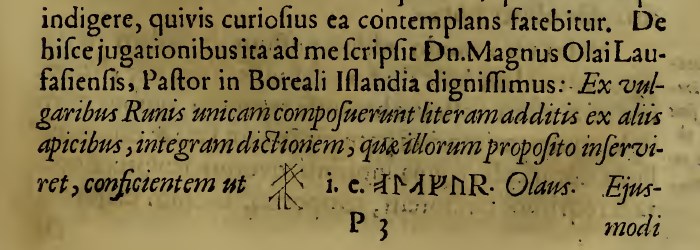 |
| Runir Seu Danica, O Worm, 1651, p117. |
The word bindrune means the binding of two or more runes. They occur intermittently throughout runic writings, however it was mostly prevelent in Norse writings and rarely so in Anglo-Saxon ones. The usual purpose was to abbreviate writing but in some cases it was used to hide what was written.
Initially used during the Viking age on Norse gravestones it gradually faded out of use along with all other runic writing, except in Iceland where the tradition continued. Not only were they used there for the purpose of writing in general but they were also used in magic, including charms, spells and their Galdrastafir - magic symbols.
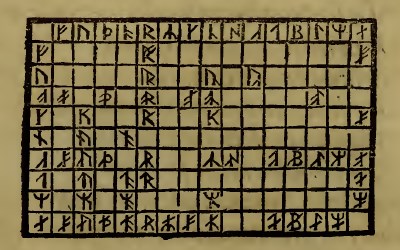 |
| Runir Seu Danica, O Worm, 1651, p120. |
Ole Worm made an extensive study of runes and wrote in Latin Runir Seu Danica a section regarding bindrunes which he calls jugationibus
. He provides one example showing a glyph of the name Olafur
, and later gives an extensive table of possible combinations.
This demonstrates clearly how bindrunes are of two types. One being a string of several runes to be read either top to bottom or bottom to top along a single stem. The other is a more simple case of two runes using their main stem to go back to back. Not unexpectedly, the A-rune ᛆ, O-rune ᚮ and U-rune ᚢ were the most common to be used.
IS IR;153 (I) - Gravestone from Stórholt, Skagafjarðar County, 1600s
 |
|
|
Transcription:
hie·r : Huile·r : unde·r : tHomas : BRanda·r : s·o·n : huors : sHal : ed [--]d [:] |
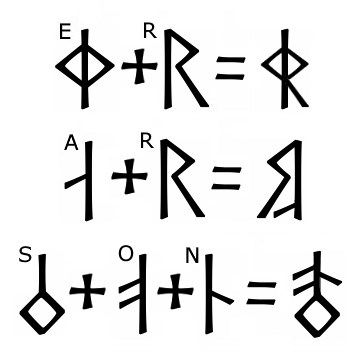 |
Dated to the 1600s, this runic gravestone has a few characters using Latin letters (the H
s and the BR
) as well as several bindrunes. The er
bind appears multiple times and employs considerable overlap of the e
and r
runes, the son
shows that rune placement (e.g. a top to bottom order) is not strict and with the ar
bind, nor is the direction a rune is facing (to the left or right). That last rule would require caution due to the a
rune being a mirror of the n
rune and the t
rune being a mirror of the l
rune.
Also noteworthy is the odd looking s
runes in the final word blessan
. It has been suggested that these are instead very rare z
runes. Finally, I could not find any town of Stórholt in Skagafjarðar yet sources state that the stone was found buried in the Stórholt church yard in 1918 and later transferred to the National Museum.
IS IR;145 (I) - Gravestone fragment, 1600s
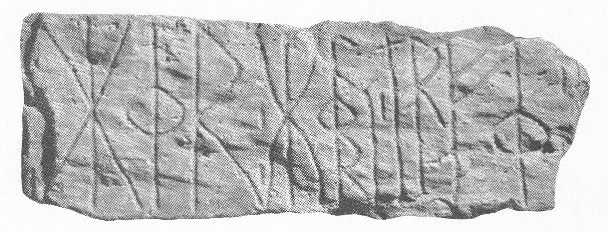 |
Transcription:
Transliteration: Translation: her × hu·i·l·e·r × to·rfe × [bia·r·n]
Hér hvílir Torfi Bjarn[a sonr]. Here rests Torfi Bjôrn's son. |
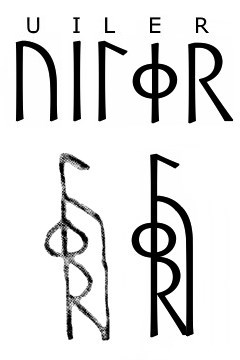 |
Also from the 1600s, this is one of two pieces found near the Holt parish church door in the Ísafjarðar county of Iceland. Past drawings show the second piece had the name of Bjarn also written with a bindrune.
ÍBR 64 8vo Samtíningur, II. hluti, Ísland 1813
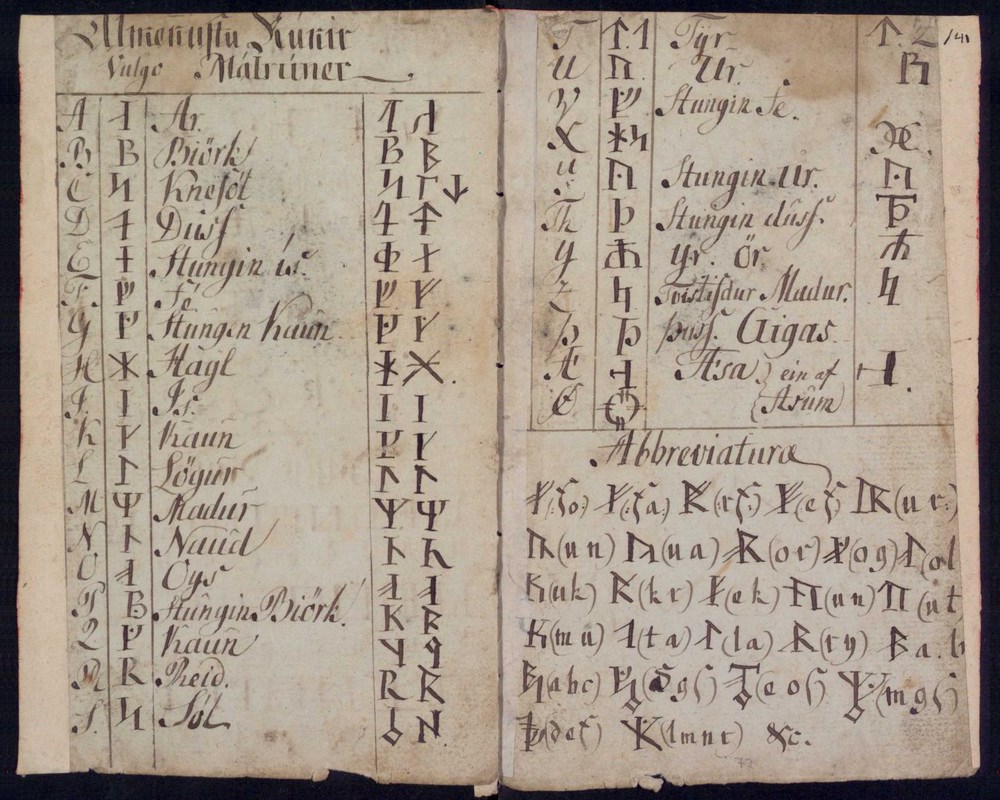 |
| ÍBR 64 8vo, 71v & 72r |
| Nokkur rúna og villuleturs stafróf. (Some runes and alternate-letter alphabets.) Several bind-runes are copied in Galdrakver LBS 4627 8vo, also from the 19th C. |
JS 149 fol - 19th century:
 |
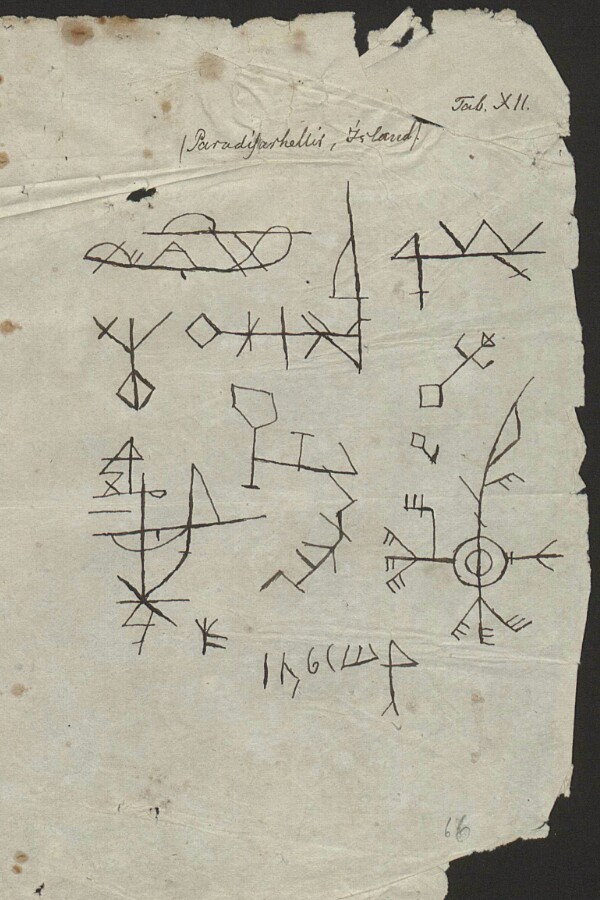 |
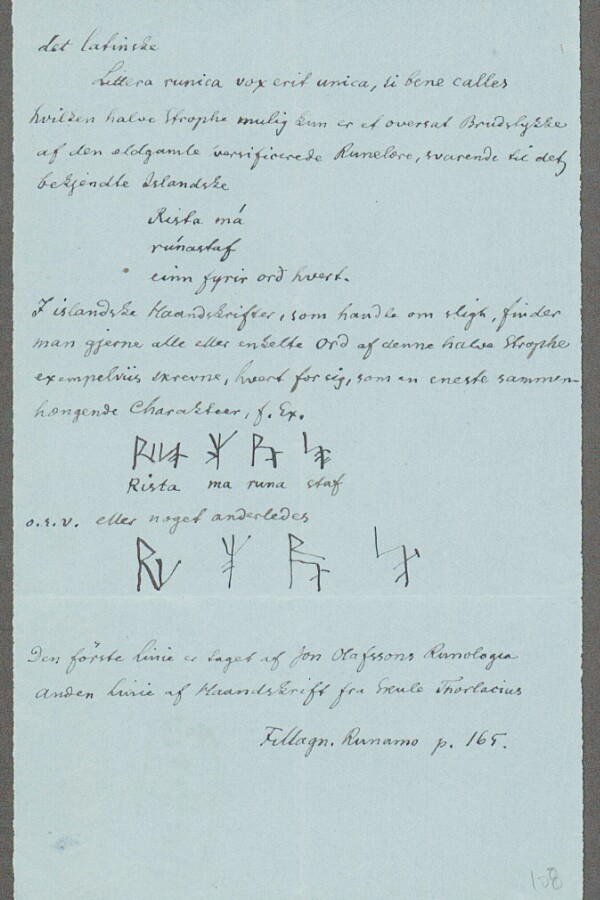 |
| JS 149 fol 24r | JS 149 fol 66r | JS 149 fol 108r |
| Samtíningur um rúnir úr fórum Jóns Sigurðssonar; Denmark, ca. 1830-1870. (Miscellanea relating to runes, held by Jons Sigurdsson...) | ||
Einkaeign Stafabók:
 |
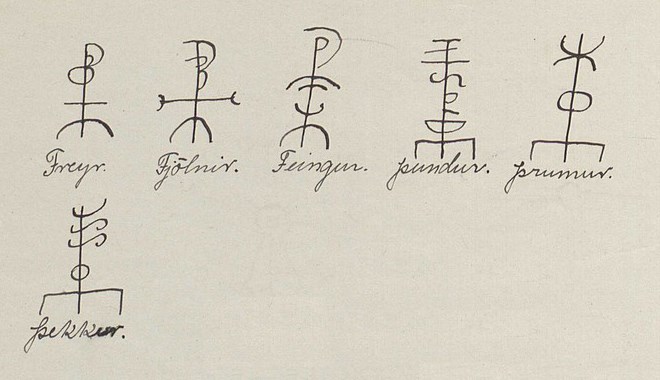 |
| Rún page 30v | Rún page 34v |
| Rún, rúnaletur o.fl. ritað fyrir Magnús Steingrímsson, Hólum í Staðardal 1928. (Secret runes and rune characters etc. written for Magnús Steingrímsson ...) | |
It is not surprising that bindrunes have found a place in modern culture for charms, words of meaning in tattoos and other symbology. However it is perplexing that currently the runic characters used are Anglo-Saxon and not Norse or Icelandic, and meanings attributed to runes are derived from Anglo-Saxon origines rather than well documented Norse rune poems.